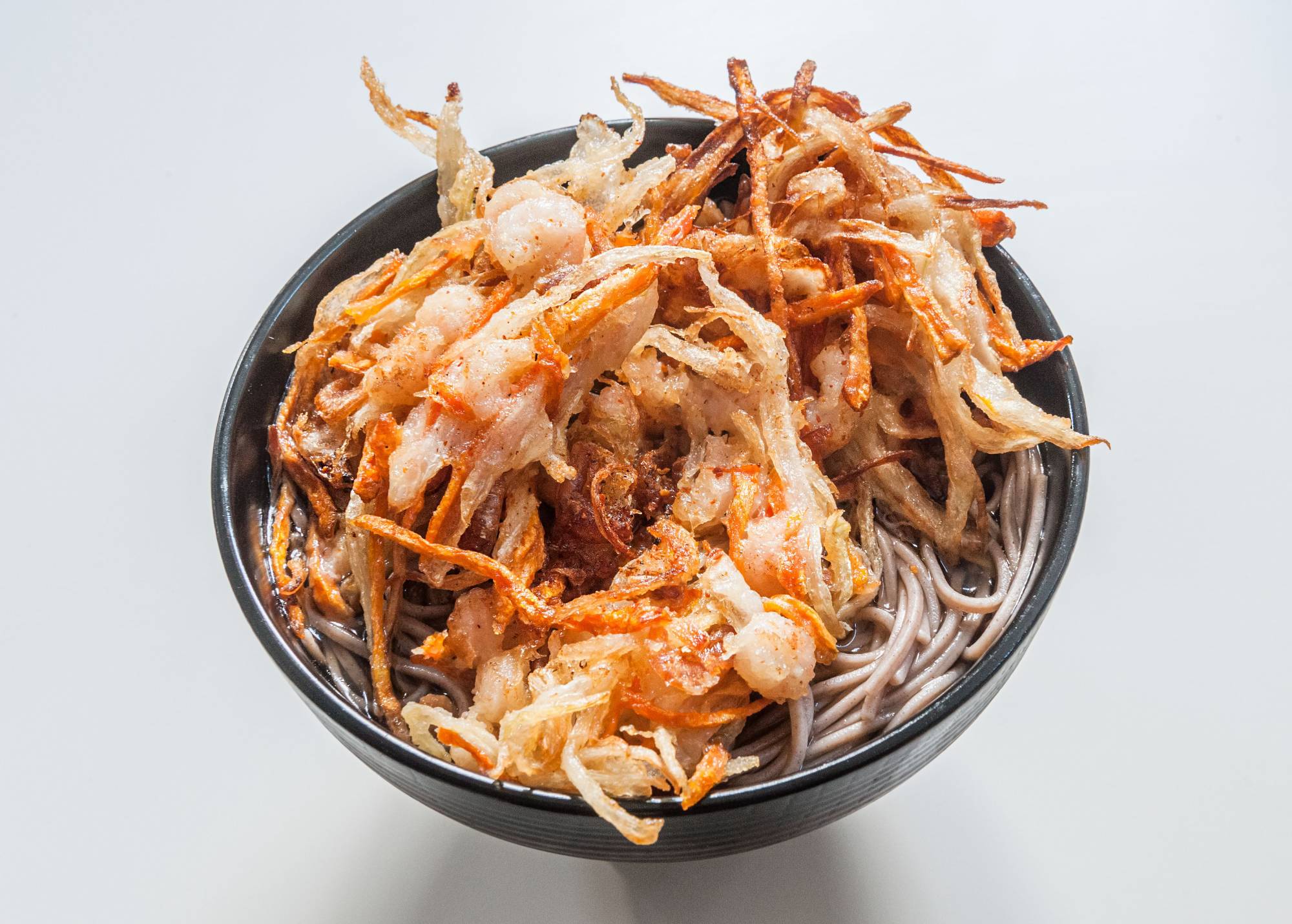You may have heard of the Portuguese origins of tempura, the battered and fried morsels that help exemplify wafū (Japanese-style) cooking. But while the Portuguese likely introduced a similar dish called peixinhos da horta sometime in the 16th century, it bears little resemblance to the tempura we know today.
In fact, it took until around the early 19th century for street food vendors to start serving up their own interpretations of this Portuguese import alongside Japanese mainstays: soba and sushi. Bowls of hot soba noodles in soup were topped with freshly fried, crispy tempura.
The first types of tempura soba were actually what we now called kakiage soba — the tempura used were the fritters of vegetables and bits of seafood that we now call kakiage (which literally means "gathered together and fried"). With this recipe, the tops of the fritters remain crispy while the bottoms soak up the rich flavors of the noodle sauce.

















With your current subscription plan you can comment on stories. However, before writing your first comment, please create a display name in the Profile section of your subscriber account page.